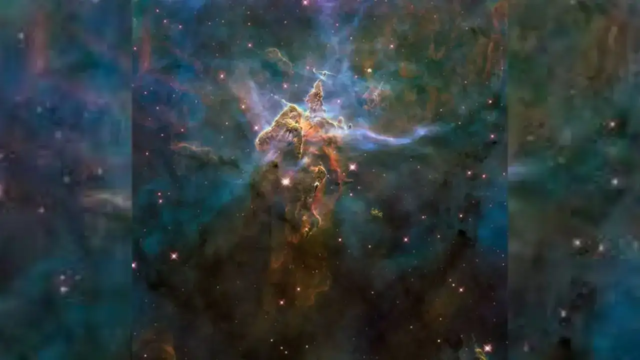This icy planet has 27 moons, spacecraft will be sent by 2030

The more scientists try to find out the mystery of the solar system, the more that mystery increases. There are many planets which have not one or two but more than a dozen moons. In such a situation, the interest about the planets increases further. Now the James Webb Space Telescope of Space Scientific Agency NASA has shared the first photo of the icy planet Uranus. In this, the invisible ring of Uranus is clearly visible. Apart from this, many of its 27 known moons are also visible. Made at a cost of $ 10 billion, this telescope is also capable of seeing things that are not visible to the normal eye. 11 of the 13 rings of the planet are also visible. The nine rings of Uranus were first discovered by NASA’s Voyager-2 in 1986. While the remaining 4 were discovered in 2003 through the Hubble Telescope.
Dusty rings made of chunks of ice
These are dusty rings. The planet’s major rings are made of chunks of ice that are several feet across. Compared to Saturn, the ring of this planet is thinner, narrower and darker. James Webb also photographed several of the 27 known moons of Uranus. Many are so light that it is not even possible to see them from here. However, in a 12-minute exposure, James Webb has discovered six bright moons. Uranus appears blue because of its thick atmosphere.
Light white layer is visible on Uranus
Oxford University-led researchers have named it the Aerosol-2 layer. Researchers say it appears somewhat white. This photo was captured by the Near Infrared Camera of the James Webb Space Telescope. It also captures very faint light. James Webb has also presented us with pictures that have never been seen before in the Solar System. James Webb, who has been working since July last year, took the most distant photo of space.
Spacecraft will be sent by 2030
According to the European Space Agency, when the Voyager 2 spacecraft passed close to Uranus, it looked like a light blue ball. But now James Webb is able to see very sensitive things through infrared. NASA scientists recently set a goal of launching probes to Uranus and Neptune by the 2030s. We know very little about both these planets.
One moon near Earth, many moons near other planets
Different planets in our solar system have their own different moons. For example, the moon we see is Earth’s own moon. Earth has only one moon. But there are many other planets which have many moons. Till now the planet with the most moons was Jupiter. This is no longer the case. The second planet in the Solar System has overtaken Jupiter in terms of the number of moons.
This planet has 82 moons
When the International Astronomical Union confirmed the name of the planet which is the richest in terms of moons. This planet has not one, two or four, but a total of 82 moons. The name of this planet is ‘Shani’. Before this, the planet with the maximum number of moons was Jupiter. Astronomer Scott S. Shepherd of the Carnegie Institute of Science has discovered 20 new moons near Saturn.
So far 205 moons have been confirmed in the solar system
According to the information given on NASA’s website, there are a total of 205 moons in our solar system. These are the ones that have been known so far. Of these, 161 i.e. about 80 percent are with Jupiter and Saturn. According to NASA, due to being closest to the Sun and due to its gravity, the planet Mercury does not have a single moon of its own. If any moon happens to be near Mercury, it will crash into it or it will be pulled into the Sun’s orbit. At the same time, till now it has not been ascertained why Venus does not have any moon of its own. The diameter of each of the 20 new moons that have been discovered is about 5 km.
Name of Planet—Number of Moon
Saturn——————–82
Jupiter ————-79
Uranus—————27
Neptune————–14
Mars—————-02
Earth—————–01






